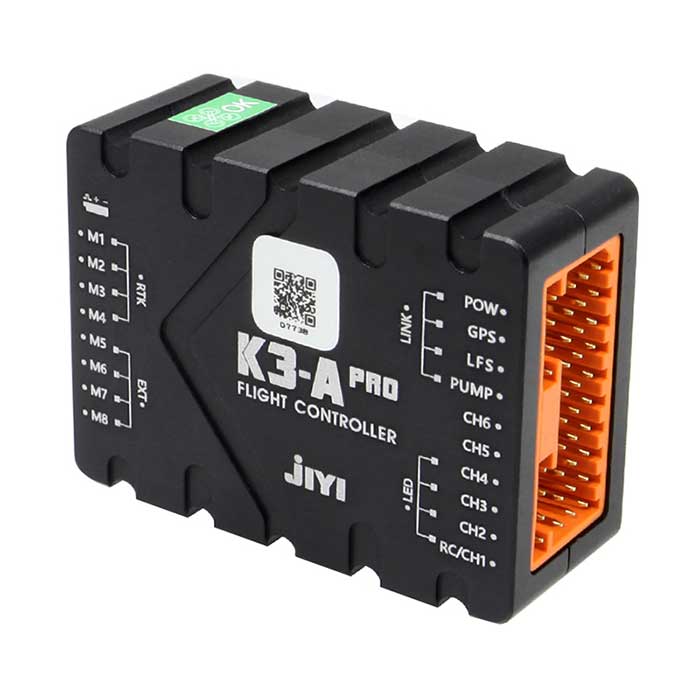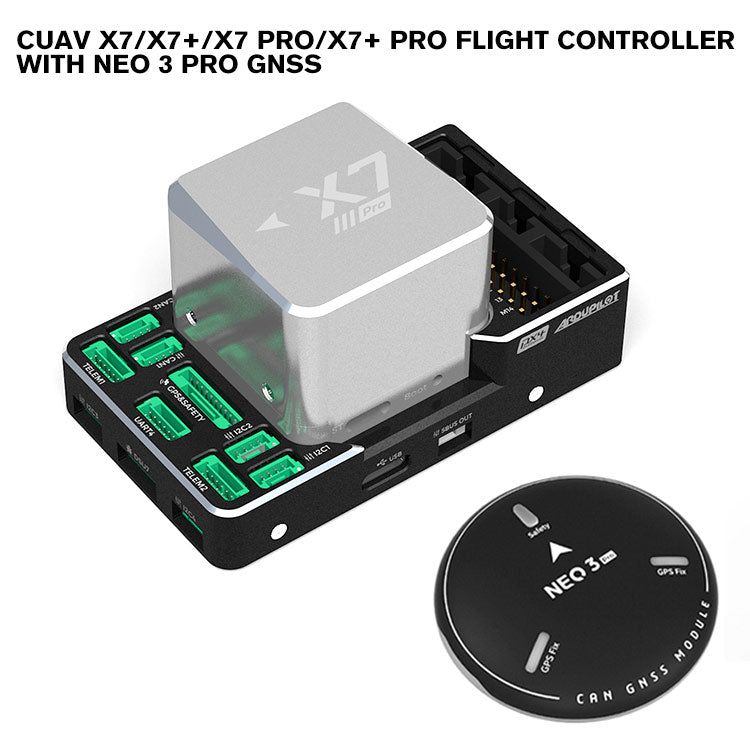Unequaled Accuracy: SparkNavi Drone Flight Controller and GNSS/INS Made in Taiwan
Unequaled Accuracy: SparkNavi Drone Flight Controller and GNSS/INS Made in Taiwan
Blog Article
Discovering the Duty of Drone Flight Controllers in Enhancing Flight Security and Navigating Efficiency
The development of drone technology has actually dramatically increased the relevance of flight controllers, which serve as the mind of these airborne cars. By incorporating real-time information from a selection of sensing units, trip controllers enhance trip security and navigating effectiveness, ensuring that drones can run smoothly also in complex atmospheres.

Recognizing Flight Controllers
Flight controllers are important parts in the performance of drones, working as the brains that handle and maintain flight operations. These advanced devices procedure data from numerous sensing units, consisting of accelerometers, gyroscopes, and GPS, to guarantee that the drone maintains its designated flight course. The flight controller analyzes this information and performs commands based on pre-defined formulas, enabling the drone to react to environmental changes, such as wind or obstacles.
The main feature of a flight controller is to keep security during flight. It attains this by making real-time modifications to the drone's motors and control surfaces, making sure equilibrium and control. Furthermore, contemporary trip controllers incorporate sophisticated attributes such as waypoint navigating, enabling automated trip paths and improved functional performance.
Understanding the architecture of flight controllers is vital for both hobbyists and experts. They normally consist of a microcontroller, firmware, and different interfaces for sensing unit input and communication. As innovation advancements, trip controllers have come to be a lot more capable and compact, integrating expert system to enhance decision-making procedures and adjust to intricate flight situations. This evolution symbolizes a crucial advancement in the drone market, paving the means for much more advanced applications and more secure operations.
Secret Components of Trip Security
Accomplishing optimum trip security in drones relies upon a number of crucial elements that function in concert to guarantee controlled and smooth procedures. Central to this security is the trip controller itself, which refines information from numerous sensors to maintain the desired trip perspective. This includes accelerometers and gyroscopes that measure activity and orientation, enabling real-time modifications to the drone's setting.
Another vital component is the electronic rate controllers (ESCs), which control the power delivered to the motors. By carefully tuning electric motor rates in action to flight controller commands, ESCs aid keep balance and counteract disturbances brought on by wind or sudden movements.
In addition, the layout of the drone's structure plays a pivotal duty in flight stability. A well-structured structure decreases resonances and boosts the total wind resistant account, adding to smoother flight characteristics. The combination of innovative formulas within the trip controller aids in predictive modifications, guaranteeing a versatile and responsive flight experience.
Together, these parts create a cohesive system that improves a drone's security, permitting accurate maneuvering and boosted efficiency in numerous trip conditions.
Navigation Performance Methods
Efficiency in navigating is necessary for enhancing drone operations, especially in complex settings. Efficient navigation techniques enhance the capability of drones to traverse tough terrains and stay clear of challenges, therefore enhancing functional effectiveness and security.
One noticeable method is the execution of sophisticated general practitioners and inertial dimension systems (IMUs) that offer accurate area tracking and positioning information. These innovations permit drones to determine optimum flight paths in real-time, taking into consideration numerous variables such as wind problems and potential challenges.
An additional technique includes using formulas for course preparation and optimization. Formulas such as A * and Dijkstra's algorithm can be deployed her comment is here to determine the most reliable course while lessening energy intake and trip time. Additionally, incorporating artificial intelligence models can enable drones to adaptively discover from their settings, boosting navigation capabilities with experience.

Influence On Autonomous Drones
The combination of innovative navigating strategies has actually profoundly transformed the capabilities of self-governing drones, allowing them to operate with better autonomy and accuracy. SparkNavi drone flight controller and GNSS/INS made in taiwan. These improvements are largely connected to innovative flight controllers that make use of real-time information handling and sensing unit blend, permitting drones to browse intricate environments effortlessly
The effect on self-governing drones prolongs beyond simple navigation; it encompasses enhanced barrier evasion, boosted security throughout vibrant conditions, and increased mission reliability. By leveraging formulas click for info that include artificial intelligence and expert system, drones can adjust to altering situations, making informed choices that maximize their flight paths while decreasing threats.
In addition, the execution of robust flight controllers has actually assisted in the execution of intricate jobs, such as aerial evaluations, distribution solutions, and agricultural monitoring, with minimal human treatment. This ability not only streamlines procedures but additionally minimizes human mistake, therefore improving total security.
Consequently, the functional scope of independent drones has actually broadened dramatically, making them vital tools in different industries. Their capability to do efficiently in varied scenarios highlights the critical function that progressed flight controllers play in forming the future of unmanned aerial systems.
Future Fads in Trip Control
Often, advancements in flight control modern technology are positioned to redefine the landscape of drone procedures in the coming years. Arising trends suggest a significant shift in the direction of enhanced synthetic knowledge (AI) combination, making it possible for flight controllers to process real-time information extra efficiently. This evolution will promote improved decision-making capacities, enabling drones to adjust to vibrant ecological problems autonomously.
In addition, the execution of device discovering algorithms is expected to boost predictive upkeep, thus lessening downtime and expanding the lifecycle of drone elements. This aggressive approach to maintenance will be essential as drone applications increase throughout various markets, from farming to logistics.

.jpg)
Last but not least, innovations in safe and secure interaction procedures will resolve safety and security and regulative concerns, ensuring other that drones can run effortlessly in congested airspaces (SparkNavi drone flight controller and GNSS/INS made in taiwan). Collectively, these trends aim towards a future where trip control systems are not just smarter and a lot more effective however also qualified of operating securely in a significantly incorporated airspace
Verdict
Finally, drone flight controllers are important to boosting flight stability and navigating efficiency via the sophisticated processing of sensor data. By preserving ideal flight perspectives and utilizing advanced formulas for course optimization and challenge evasion, these controllers considerably add to the autonomy and operational safety of drones. As modern technology remains to progress, additionally improvements in trip control systems are expected, guaranteeing better efficiency and expanded capacities in the realm of unmanned aerial automobiles.
By integrating real-time data from a range of sensing units, trip controllers boost trip security and navigating performance, making sure that drones can run efficiently also in intricate settings.Trip controllers are indispensable components in the performance of drones, serving as the minds that maintain and manage flight operations. Furthermore, modern-day trip controllers include innovative functions such as waypoint navigation, permitting for automated flight paths and improved operational performance.
Central to this security is the flight controller itself, which processes information from different sensing units to keep the desired trip attitude.In conclusion, drone flight controllers are integral to enhancing trip security and navigating performance via the innovative handling of sensor information.
Report this page